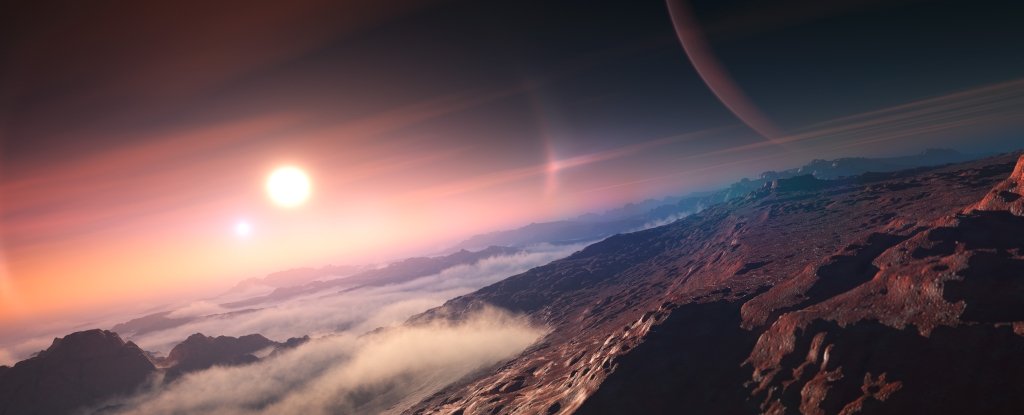

So, to estimate the frequency of Earth-size exoplanets, we need to correct for this sampling bias. However, recall that really small planets were difficult for the Kepler instruments to find. What a remarkable discovery it is that the most common types of planets in the Galaxy are completely absent from our solar system and were unknown until Kepler’s survey. (credit: modification of work by NASA/Kepler mission) Note that planets that are between 1.4 and 4 times the size of Earth make up the largest fractions, yet this size range is not represented among the planets in our solar system. On the vertical axis, you can see the fraction that each size range makes up of the total. Sizes range from half the size of Earth to 20 times that of Earth. This bar graph shows the number of planets of each size range found among the first 2213 Kepler planet discoveries.

These have been nicknamed super-Earths, while the other large group with sizes between 2.8 and 4 that of Earth are often called mini-Neptunes.įigure 21.23 Kepler Discoveries. The most common planets have radii between 1.4 and 2.8 that of Earth, sizes for which we have no examples in the solar system. However, there is one huge difference between this observed size distribution and that of planets in our solar system.

This immediately tells us that the initial Doppler discovery of many hot Jupiters was a biased sample, in effect, finding the odd planetary systems because they were the easiest to detect. While the observations apply only to the stars observed by Kepler, those stars are reasonably representative, and so astronomers can extrapolate to the entire Galaxy.įigure 21.23 shows that the Kepler discoveries include many rocky, Earth-size planets, far more than Jupiter-size gas planets. Although Kepler looked at only a very tiny fraction of the stars in the Galaxy, the sample size was large enough to draw some interesting conclusions. One of the primary objectives of the Kepler mission was to find out how many stars hosted planets and especially to estimate the frequency of earthlike planets. (credit: modification of work by NASA/Ames Research Center/Jessie Dotson and Wendy Stenzel) When this graph was made, astronomers had discovered just over 3,500 exoplanets as of the start of 2022, that number has risen to roughly 5,000. The yellow dots show planets discovered by the Kepler mission using transits, and the blue dots are the discoveries by other projects and techniques. Recall that Mercury takes 88 days and Earth takes a little more than 365 days to orbit the Sun. The horizontal axis shows the time each planet takes to make one orbit (and is given in Earth days). Horizontal lines show the size of Earth, Neptune, and Jupiter. The vertical axis shows the radius of each planet compared to Earth. In effect, the “discovery space” for Kepler was limited to planets with orbital periods less than 400 days and sizes larger than Mars.įigure 21.22 Exoplanet Discoveries through 2017. (Remember that three evenly spaced transits must be observed to register a discovery.) At the smaller sizes, the absence of planets much smaller than one earth radius is due to the difficulty of detecting transits by very small planets. The absence of Kepler-discovered exoplanets with orbital periods longer than a few hundred days is a consequence of the 4-year lifetime of the mission. You can see the wide range of sizes, including planets substantially larger than Jupiter and smaller than Earth.

The Kepler telescope has been responsible for the discovery of most exoplanets, especially at smaller sizes, as illustrated in Figure 21.22, where the Kepler discoveries are plotted in yellow. Another surprise is the existence of whole classes of exoplanets that we simply don’t have in our solar system: planets with masses between the mass of Earth and Neptune, and planets that are several times more massive than Jupiter. Such systems do exist in large numbers, but many exoplanets and planetary systems are very different from those in our solar system. Discuss the kinds of planetary systems we are finding around other starsīefore the discovery of exoplanets, most astronomers expected that other planetary systems would be much like our own-planets following roughly circular orbits, with the most massive planets several AU from their parent star.Identify which kind of exoplanets appear to be the most common in the Galaxy.Explain what we have learned from our discovery of exoplanets.By the end of this section, you will be able to:


 0 kommentar(er)
0 kommentar(er)
